Ad
Ad
The Belgian Minerva Armoured Car
The Belgian Minerva Armoured Car was a military vehicle which was developed from the Minerva Civilian Automobiles by Belgium.

The Belgian Minerva Armoured Car was developed at the start of the World War Ⅰ, as during that time there was a massive increase in the demand for armoured cars. Moreover, by 1914 Belgium had a network of good roads. The flat terrain of Belgium and the good roads favoured large scale use of armoured cars.
First Armoured Cars
As we know that by the late nineteenth century, there was a lot of stir created by the armoured vehicles and they were being considered for military use. The armoured vehicles during that time were created by adding armour and weapons to the existing vehicles.
In the previous articles, we have already discussed the first armoured car, The Simms' Motor War Car, designed by Frederick Richard Simms. Simms was hired by the British army to build the first armoured vehicle to provide protection to the troops from the front during the Second Boer War. In order to accomplish the task, Simms had started working with the armament dealer called Vickers.
Another armoured car developed during that time was the French Charron, Girardot et Voigt 1902, which has already been covered by us in the previous article. It was displayed to the public at Salon de l'Automobile et du cycle in Brussels in 1902. The vehicle was equipped with a Hotchkiss Machine Gun with a 7 mm armour for the gunner. But it could only go as far as the prototype and was never produced commercially to be used in warfare.
World War Ⅰ
Ad
Ad

On the 4th of August 1914, Britain declared war on Germany. The countries involved, alerted their troops to be ready to fight. Their troops consisted of the army and the navy.
The causes of the First World War are complicated and they are debated and discussed to this date.
During that time, Great Britain, Germany, Austria-Hungary and Russia were ruling many countries across the world and the countries they ruled were considered their colonies. These powerful empires wanted to have full control over the countries they were ruling. But there were some countries that were taking over new territories and these emerging countries posed a threat to the existing imperial powers.
Countries across the world had Mutual Defence Agreements with their neighbours. These treaties clearly stated that if a country was attacked, the Allied Countries were bound to defend them.
Assassination of Archduke Franz Ferdinand

On 28 June 1914, Archduke Franz Ferdinand, the heir to the throne of Austria-Hungary, travelled to Sarajevo to inspect the imperial armed forces in Bosnia. Franz Ferdinand and his wife Sophie travelled in a car with an open top. The car's top was rolled back to allow the crowd of people gathered there to have a better view of the archduke and his wife.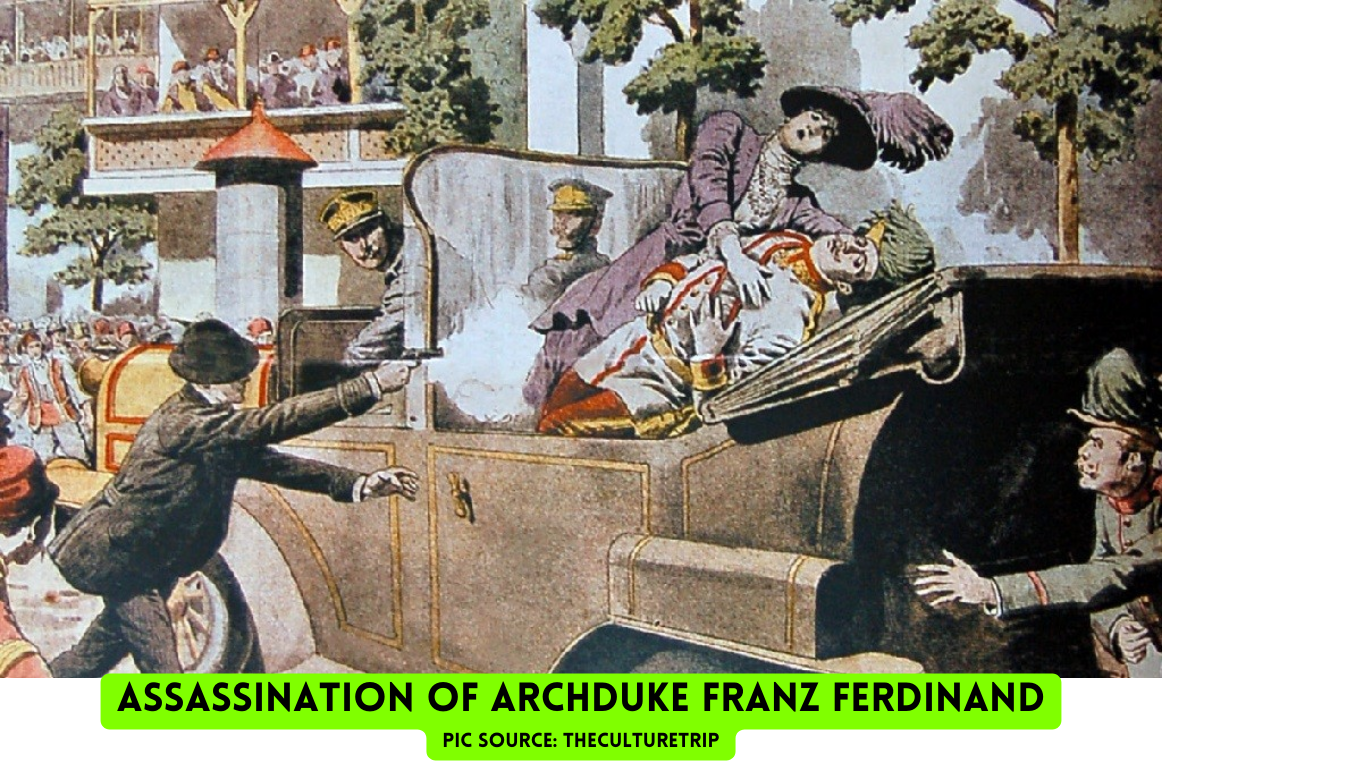
Gavrilo Princip, a Bosnian Serb student, who was then a teenager, was motivated by his hatred of the Archduke and his political views. When Princip found himself close to the car, he drew his pistol and shot the Archduke and his wife at point-blank range. Soon after, he tried to shoot himself, but was stopped by the crowd. He quickly took poison, but the poison seemed to be old and did not cause him any harm and it only made him vomit. He was arrested by the police.
The archduke was shot in the neck while his wife was hit in the stomach by a stray second bullet. Sophie died in the car and the archduke passed away after arriving at the hospital.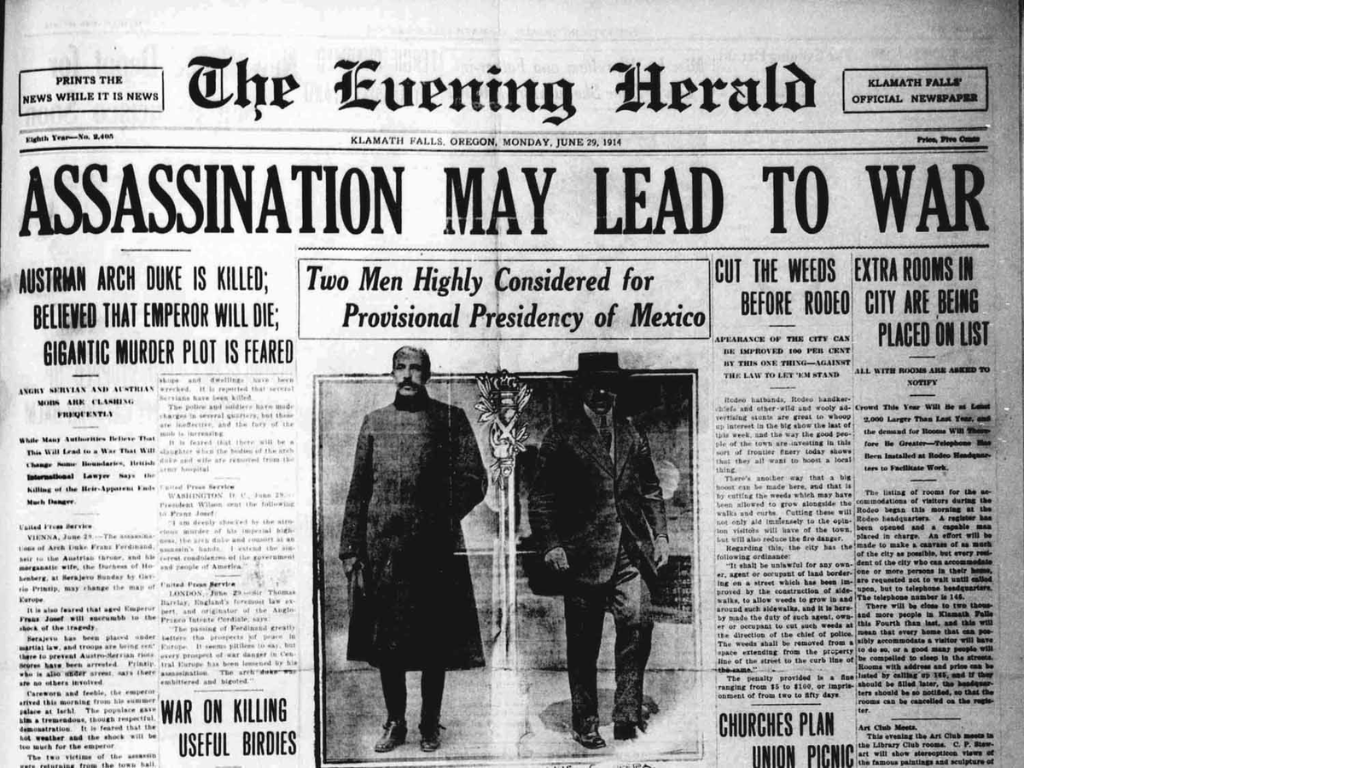
The assassination of Archduke Franz Ferdinand by the Serbian national Gavrilo Princip, is widely accepted as the main cause that sparked the outbreak of World War Ⅰ.
Little did Gavrilo Princip know that his actions would result in a conflict that would eventually become one of the bloodiest wars in the history of mankind.

Austria-Hungary declared a war on Serbia as their leader was shot by a Serbian man.
Russia had an alliance with Serbia and got involved in the war.
Germany had an alliance with Austria-Hungary and so Germany declared war on Russia.
Britain was bound by agreement to protect both Belgium and France.
When Germany invaded a Neutral Belgium, Britain declared war on Germany.
The First World War is also known as The Great War as it had affected the lives of the people from all over the world.
Battleground
The battles took place in France, Luxembourg and Belgium which were called the Western Front and in Russia which was the Eastern Front.
Minerva Armoured Car
Minerva was used in combat in August 1914. Belgium became the first Nation to use armoured cars in World War Ⅰ.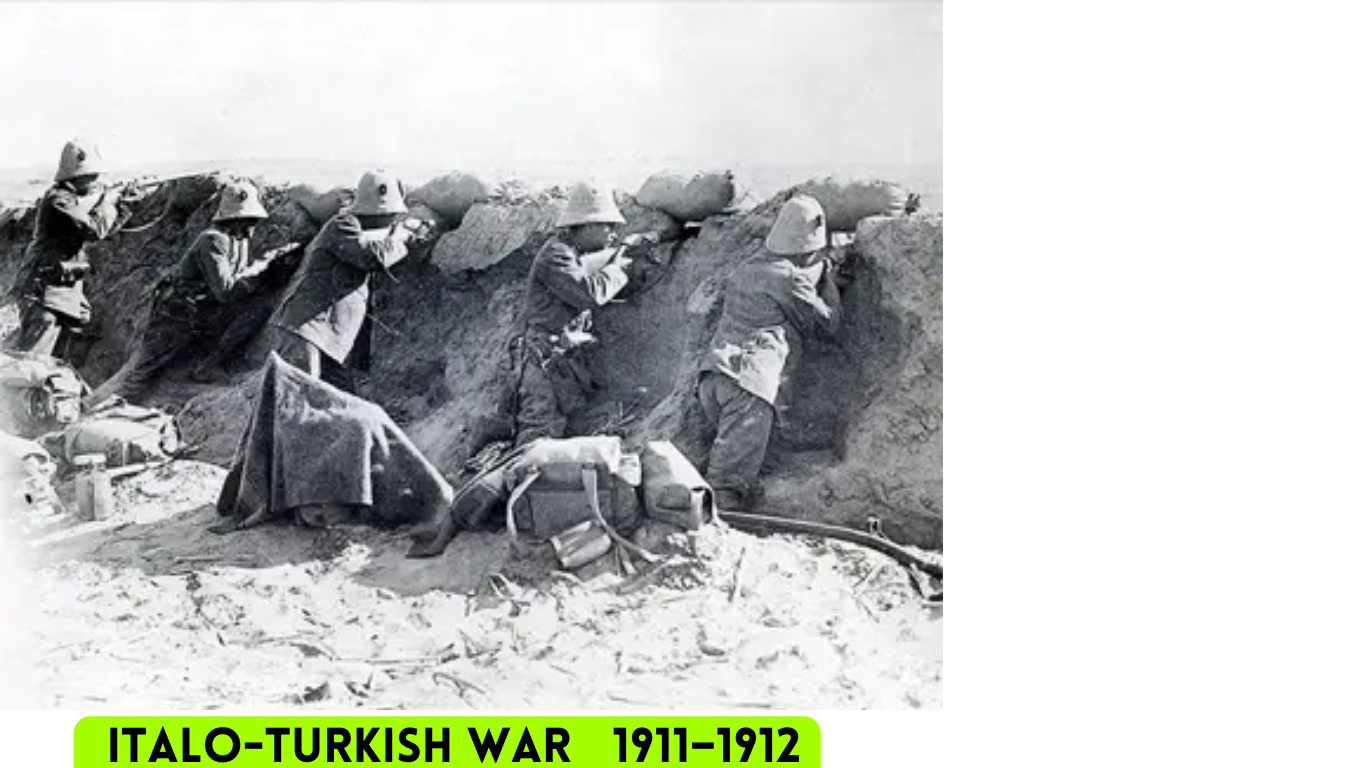
Before Belgium, Italy had been the first to use armoured cars in a conflict, the 1911–1912 Italo-Turkish War, which happened a little earlier.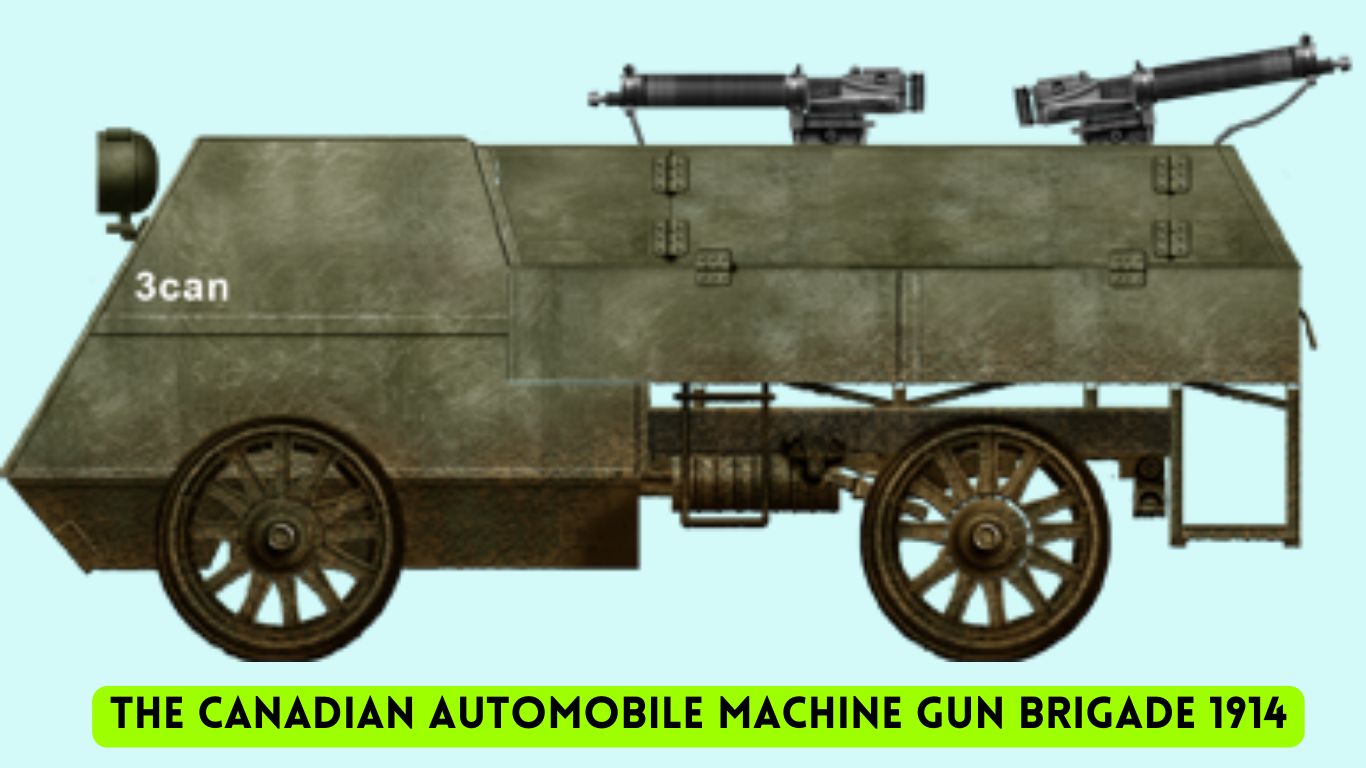
There was one more armoured car which was being developed during that time. It was called The Canadian Automobile Machine Gun Brigade. It was developed on August 24, 1914 and was close to being assembled by September that year.
Like the other armoured cars during World War Ⅰ, the Belgian Minerva Armoured Car was created hastily without taking into account the minute details. The vehicle had a civilian automobile chassis on which was a platform, mounted with a machine gun.
At the outbreak of the war, the Belgian Minerva Armoured Car was forced into the battlefield without giving much thought to the details. The Belgian armoured cars marked the deployment of the first armoured cars in the world war. Other countries quickly jumped on the bandwagon but the fact was, the Army of most of the nations during that time depended completely on the cavalry for main offensive charges.
More About The Belgian Minerva Armoured Car
Early Development

The original design of the armoured car was attributed to Lieutenant Charles Henkart. According to his instructions, two vehicles were converted first by attaching armour plating around the existing framework of the car. The work was completed by 1914.
A total of thirty five cars were completed, before the German advance through Belgium into France, during the opening offensive of the conflict.
Engine
The vehicle was given power through an in-house Minerva 8L series, 4 Cylinder gasoline-fuel engine of 40 horsepower which allowed a maximum road-speed of 25 miles per hour. Operational ranges reached 90 miles.
The initial armoured cars by Minerva were very basic but soon Minerva came up with a standard design. By September 1914, American newspapers had started reporting the use of armoured cars and it was being massively covered by the press.
Design
The vehicle was heavy and to cope with the extra weight two wheels were added to the rear. To make it more rigid, there were no doors and the crew had to climb into the vehicle. The single open top structure which was also called the 'Bathtub' housed four members, the driver, the commander, the gunner and gun servant. If required the crew chamber could house six members.
The car was flat from the front and it was rounded at the end. The ring mount which was meant for the machine-gun was placed at the rear. The machine-gun was a standard air-cooled 8mm Hotchkiss Machine Gun which was protected by a shield.
The driver’s position was in the front on the right side. An armoured superstructure was constructed over the driver’s compartment. The seating area for the passenger was at the rear. Thickness of the armour plate was 4mm and the weight of the vehicle was 4 tons.
Provided Little Protection
The cars proved to be a great success during the war, but eventually the effect started fading out as the vehicle provided little protection to the soldiers. It could provide protection only from small arms fire and an artillery strike could easily destroy the vehicle. The armoured car designed by Minerva had an open top. It provided little protection to the crew as the crew was partially exposed to gunfire.
During the war, Lieutenant Henkart was ambushed by the Germans. The open top provided little protection and it turned out to be fatal for him. On September 6, 1914, Lieutenant Henkart was killed by gunfire.
Fate of the Belgian Minerva Armoured Car

After the German invasion and occupation of Belgium, the Minerva factory was captured but before that the factory had already built about thirty five Minerva Armoured Cars.
Four cars were overpowered by the Germans, and these were repaired and put back into service to be used against their former owners. The Germans used three of the captured cars during the invasion of Romania. And it is believed that one car was also used in Berlin during the 1919 troubles.
Upgrade
By 1916, the design of the Belgian Armoured Car was completely revised. The open-top was enclosed completely. The machine gun was now relocated and placed under an armoured cupola. Two side doors were added to the vehicle.
Trench Warfare

Many battles were fought using trench warfare. During trench warfare, long ditches were dug in the ground. The soldiers lived in the trenches and climbed out to attack when required.
After the Western Front got involved in trench warfare, some of the cars were sent to the Eastern Front with the Belgian Expeditionary Corps in Russia. These cars were transferred to the Russians and they fought briefly in 1917.
The off roading capabilities of the Belgian Armoured Cars were rather limited. But other robust features of the car allowed some of them to remain in service until 1935 with gendarmerie units, the rural police.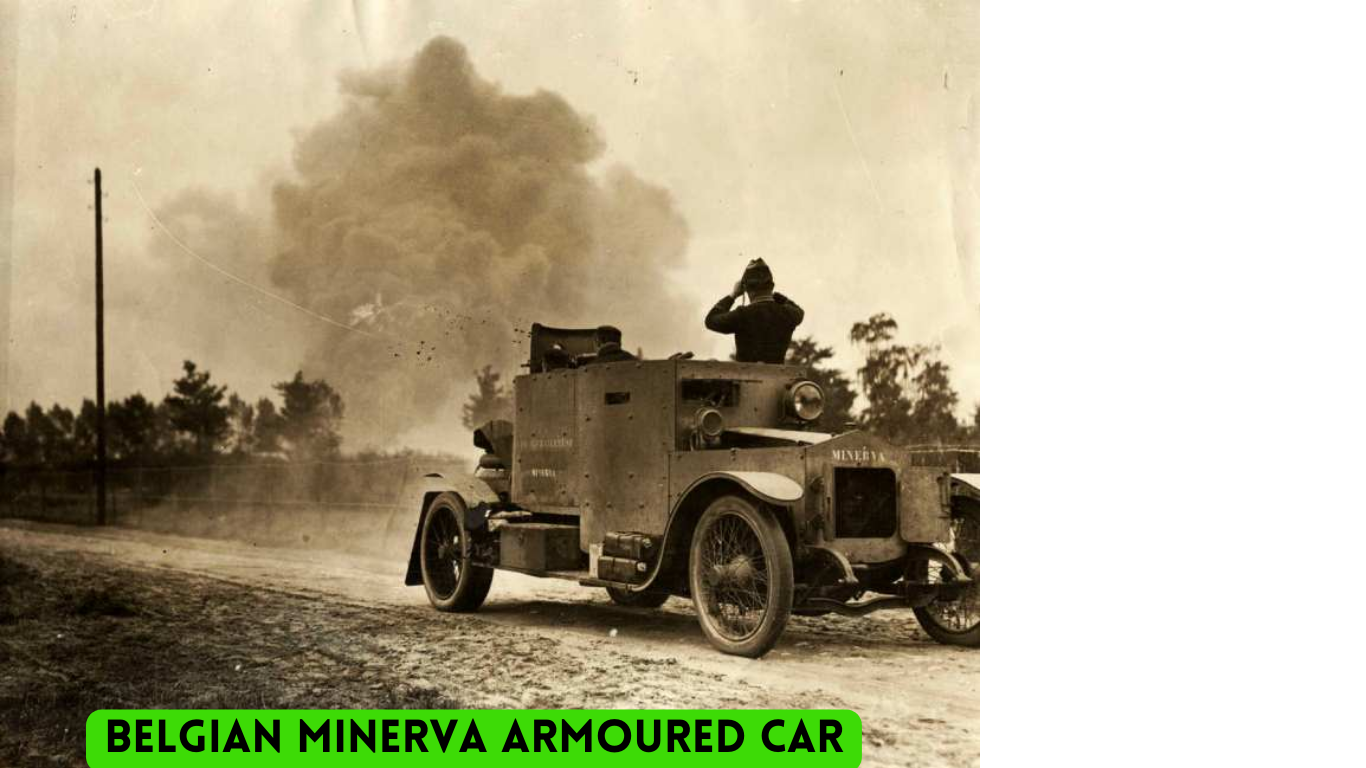
The last Minerva armoured cars were removed from Belgian Service in 1935.
Through this article we have discussed The Belgian Minerva Armoured Car which was the first armoured vehicle to be used in World War Ⅰ . Through our article series on 'Evolution of Military Vehicles’, we bring out unique and interesting stories from the Military Automotive World. To find out more about our latest stories, keep checking our website. In case of any query, feel free to contact us.
More Articles
Safest Car in India: Five Star Global NCAP Rated Cars
Safety is growing all the more indispensable for Indian car buyers. The benchmarking of safety standards of vehicles has come in the form of the Global New Car Assessment Program (GNCAP).
02-Jan-2025 09:58 AM
Read Full ArticleSafest Car in India: Five Star Global NCAP Rated Cars
Safety is growing all the more indispensable for Indian car buyers. The benchmarking of safety standards of vehicles has come in the form of the Global New Car Assessment Program (GNCAP).
02-Jan-2025 09:58 AM
Read Full Article10 Tips to Improve Your Bike’s Mileage
Improving your bike's fuel efficiency isn't rocket science. You can get the most out of every drop of fuel by following smart riding habits, routine maintenance, and a little mindfulness.
30-Dec-2024 01:09 PM
Read Full Article10 Tips to Improve Your Bike’s Mileage
Improving your bike's fuel efficiency isn't rocket science. You can get the most out of every drop of fuel by following smart riding habits, routine maintenance, and a little mindfulness.
30-Dec-2024 01:09 PM
Read Full ArticleHow Engine Technology Impacts Mileage: Carburetor vs. Fuel Injection
The performance and fuel efficiency of vehicles are greatly impacted by the substantial advancements in engine technology. The way fuel is supplied to the engine is one of the most important distinctions.
30-Dec-2024 06:48 AM
Read Full ArticleHow Engine Technology Impacts Mileage: Carburetor vs. Fuel Injection
The performance and fuel efficiency of vehicles are greatly impacted by the substantial advancements in engine technology. The way fuel is supplied to the engine is one of the most important distinctions.
30-Dec-2024 06:48 AM
Read Full ArticleThe Effect of Weather Conditions on Motorcycle Mileage
Weather plays a huge role in determining how far you can go on a liter of fuel. Whether it is a sunny day, a cold winter morning, a rainy afternoon, or a windy evening, each condition affects your bike's mileage differently.
27-Dec-2024 12:27 PM
Read Full ArticleThe Effect of Weather Conditions on Motorcycle Mileage
Weather plays a huge role in determining how far you can go on a liter of fuel. Whether it is a sunny day, a cold winter morning, a rainy afternoon, or a windy evening, each condition affects your bike's mileage differently.
27-Dec-2024 12:27 PM
Read Full ArticleBest Riding Tips for Maximizing Your Bike's Mileage
In this article, we'll explore some tried and tested practices that help squeeze every last kilometer from each drop of fuel. From clever riding techniques to regular maintenance, these tips will ensure you get the most from your bike while keeping it in
27-Dec-2024 06:09 AM
Read Full ArticleBest Riding Tips for Maximizing Your Bike's Mileage
In this article, we'll explore some tried and tested practices that help squeeze every last kilometer from each drop of fuel. From clever riding techniques to regular maintenance, these tips will ensure you get the most from your bike while keeping it in
27-Dec-2024 06:09 AM
Read Full ArticleElectric Scooter Maintenance Tips For All Seasons
Learn how to maintain your electric scooter across seasons. From summer heat to monsoon rains and winter cold, follow expert tips for safety and efficiency.
27-Dec-2024 05:52 AM
Read Full ArticleElectric Scooter Maintenance Tips For All Seasons
Learn how to maintain your electric scooter across seasons. From summer heat to monsoon rains and winter cold, follow expert tips for safety and efficiency.
27-Dec-2024 05:52 AM
Read Full ArticleAd
Ad
Cars In India
Toyota Camry
₹ 48.00 Lakh
Honda Amaze
₹ 8.00 - 10.90 Lakh
Audi Q7
₹ 88.66 - 97.81 Lakh
Mahindra XEV 9e
₹ 21.90 Lakh
Mahindra Be 6
₹ 18.90 Lakh
MG Cyberster
₹ 60.00 - 65.00 Lakh
Tata Harrier EV
₹ 24.00 - 28.00 Lakh
Maruti e Vitara
₹ 20.00 - 25.00 Lakh
MG Mifa 9
₹ 1.00 - 1.10 Cr
Hyundai Creta EV
₹ 22.00 - 26.00 Lakh
Ad
Ad
Ad